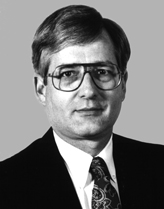About This Item
- Full TextFull Text(subscription required)
- Pay-Per-View PurchasePay-Per-View
Purchase Options Explain
Share This Item
The AAPG/Datapages Combined Publications Database
AAPG Special Volumes
Abstract
|
Edited by Authors:
Published |
|
Wishes to thank the following for their generous contributions to Stochastic Modeling and Geostatistics * Amoco Production Company * Amoco E & P Technology * Kansas Geological Survey * Marathon Oil Company * Mobil Oil Corporation * Statoil Contributions are applied against the production costs of the publication, thus directly reducing the book's purchase price and making the volume available to a greater audience. |
|
|
|
|
|
Acknowledgments * |
||||
|
||||
|
This book is published in memory of Richard Leonard, son of Jay and China, brother of Ted. |
||||
|
|
||||
|
About the Editors * |
|||||
| Jeffrey
M. Yarus was born in 1951 in Cleveland, Ohio. In 1969, he began his
formal studies in geology at the College of Wooster, Ohio. During his undergraduate
years, Yarus was awarded an opportunity to study geology at the University
of Durham, England, on a scholarship for one year. Upon completion of the
special program, he returned to Wooster and received his B.A. degree with
honors in 1973. In September of that year, Yarus began his graduate studies
at Michigan State University under the supervision of Robert Ehrlich. At
Michigan State, Yarus first developed his interest in computer mapping
and numerical and statistical analysis. In 1974, Yarus followed Ehrlich
to the University of South Carolina where he finished his M.S. degree and
continued through the Ph.D. program in geology. Yarus joined Amoco Production
Company in New Orleans, Louisiana, in 1977 as a production geologist for
the Gulf Coast region. In 1980, he left Amoco and moved to Denver, Colorado,
where he worked in the independent oil business for eight years. As an
independent, Yarus worked a variety of domestic basins in the Rockies,
mid-continent, and Appalachian regions. In 1988, Yarus was hired by Marathon
Oil Company's Petroleum Technology Center as a senior mathematical geologist.
At Marathon, he played a major role in instituting desktop computer mapping
and geostatistical technology. He was responsible for providing training
and consulting in this area for the entire company. Yarus has written a
variety of papers and taught courses on computer mapping and applied statistical
methods. His professional contributions are many, and include an article
in AAPG's first volume on computer applications (published in 1992), and
an AAPG-sponsored course on computer mapping techniques. Yarus has been
an adjunct professor at the University of Colorado, Denver, and is presently
a visiting professor at the Colorado School of Mines. Today, he works for
GeoGraphix, Inc., where he is the manager of technical services and support.
Richard L. Chambers was born in 1947 in Algona, Iowa. He earned B.A. and M. S. degrees in geology from the University of Montana, and then attended Michigan State University, earning a Ph.D. in geology in 1975, with an emphasis on quantitative sedimentology and statistical applications. In 1972, he joined the Great Lakes Environmental Research Laboratory (GLERL), National Oceanographic and Atmospheric Administration, U.S. Department of Commerce. The bulk of his work at GLERL involved sediment-water interface geochemistry, depositional processes, and mass balance studies in Lake Michigan. Chambers joined Phillips Petroleum Company in Bartlesville, Oklahoma, in 1980 as a senior geologist. From 1980 to 1988, his activities at Phillips included research in high-resolution P- and S-wave seismic imaging and regional basin studies to develop exploration plays and lease acquisition strategies. In 1988, he joined the Amoco Production Company Research Center in Tulsa, Oklahoma, as a senior research scientist to bring geostatistical technology to Amoco. His work at Amoco involves the application of geostatistical methods to exploration and production problems, with major emphasis on data integration, reservoir characterization, and uncertainty assessment. Chambers co-developed an in-house training course in geostatistics and has taught that course for the past five years. In 1991, he became the supervisor of the reservoir imaging and characterization group, where he now spends his time on less technical issues. He has written articles in sedimentology, geochemistry, geophysics, and geostatistical applications. |
|||||
 |
|||||
 |
|||||
|
|
|||||
|
|
View the First Page
A text abstract of this article is not available. The first page of the PDF appears below.
You may download the first page as a PDF.
Pay-Per-View Purchase Options
The article is available through a document delivery service. Explain these Purchase Options.
| Watermarked PDF Document: $16 | |
| Open PDF Document: $28 |
